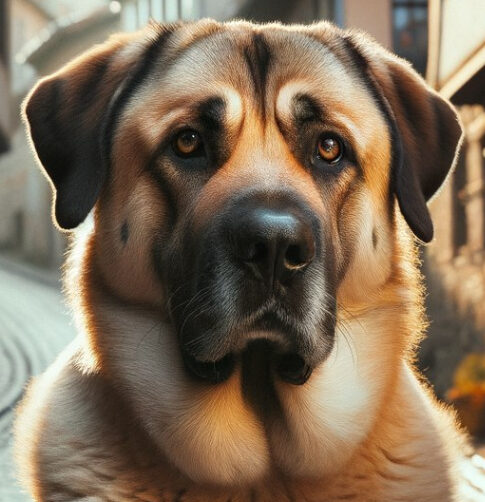Working Roles and Conservation Efforts: Anatolian Shepherd Dog
Introduction
The Anatolian Shepherd Dog, a robust and versatile breed, has been cherished for centuries for its intelligence, loyalty, and resilience. Renowned for its working roles and significant contributions to conservation efforts, this breed is a cornerstone in animal husbandry and wildlife protection. This article delves into the multifaceted aspects of the Anatolian Shepherd Dog, exploring its history, features, roles, and the ongoing efforts to conserve this remarkable breed.
Definition and Overview
The Anatolian Shepherd Dog, originating from Turkey, is a large, powerful, and ancient breed primarily developed for guarding livestock. Known for their independent and protective nature, these dogs have adapted to various environments, making them indispensable in both agricultural and conservation settings.
Key Characteristics:
- Size: Large and muscular, with males typically weighing 110-150 pounds and females 80-120 pounds.
- Coat: Dense, weather-resistant double coat.
- Lifespan: 11-13 years.
- Temperament: Loyal, intelligent, and independent.
Their primary role has historically been livestock guardianship, but their versatility extends to modern conservation projects, where they are employed to mitigate human-wildlife conflicts.
Historical Background
The Anatolian Shepherd Dog’s lineage dates back over 4,000 years, originating in the Anatolian region of Turkey. These dogs were bred to protect flocks from predators such as wolves, bears, and jackals. Their development was influenced by the need for a breed that could withstand harsh climates and perform without direct human supervision.
Historical Highlights:
- Ancient Origins: Evidence suggests these dogs were integral to early agricultural societies in the Middle East.
- Cultural Significance: In Turkish culture, these dogs are revered as guardians and symbols of strength.
- Global Spread: Introduced to the United States in the 20th century, they gained recognition for their utility and adaptability.
Key Features and Components
- Physical Traits:
- Stamina: Designed for endurance, they can cover large territories.
- Senses: Acute hearing and sharp eyesight enhance their guardian capabilities.
- Behavioral Traits:
- Protective Instincts: Deeply bonded to their charges, they exhibit strong territorial behavior.
- Independence: Able to make decisions without constant guidance.
- Adaptability:
- Thrives in varied climates, from arid deserts to cold mountainous regions.
- Adjusts well to different roles, including family companionship and conservation tasks.
Benefits and Importance
The Anatolian Shepherd Dog is invaluable in multiple domains due to its unique traits and capabilities.
- Livestock Protection:
- Reduces predation rates by acting as a deterrent.
- Enables sustainable farming practices by minimizing the need for lethal predator control.
- Conservation Efforts:
- Successfully employed in projects to protect endangered species, such as cheetahs in Namibia.
- Mitigates human-wildlife conflicts by safeguarding livestock without harming predators.
- Companionship:
- Loyal and affectionate, making them excellent family dogs for experienced owners.
Challenges and Drawbacks
Despite their advantages, owning and working with Anatolian Shepherd Dogs comes with challenges:
- Training and Socialization:
- Their independence can make training a challenge for inexperienced handlers.
- Early socialization is crucial to manage their protective instincts.
- Space Requirements:
- Requires large spaces to roam and fulfill their guardian instincts.
- Health Concerns:
- Prone to conditions like hip dysplasia and hypothyroidism.
- Regular veterinary care and a balanced diet are essential.
- Mismanagement Risks:
- Poorly trained dogs can become overly aggressive or difficult to handle.
Future Trends and Developments
The role of Anatolian Shepherd Dogs is evolving with advancements in conservation science and sustainable agriculture.
- Expanding Conservation Roles:
- Increased use in global wildlife conservation programs.
- Collaborations between NGOs and local farmers to employ these dogs in predator-rich regions.
- Selective Breeding:
- Efforts to maintain genetic diversity while enhancing desirable traits.
- Awareness Campaigns:
- Promoting the breed’s benefits to encourage responsible ownership and conservation efforts.
Conservation Efforts
- Preservation Programs:
- Organizations in Turkey and worldwide are working to preserve the breed’s purity and heritage.
- Training initiatives to educate farmers about their role in sustainable farming.
- Wildlife Protection Projects:
- Programs like the Cheetah Conservation Fund (CCF) in Namibia showcase their effectiveness in reducing livestock predation.
- Community Engagement:
- Collaboration with rural communities to integrate these dogs into local economies.
FAQs
1- What makes Anatolian Shepherd Dogs suitable for conservation efforts?
Their intelligence, protective nature, and adaptability make them ideal for guarding livestock and mitigating human-wildlife conflicts.
2- Are Anatolian Shepherd Dogs good family pets?
Yes, but they require experienced owners who can manage their protective instincts and provide proper training.
3- How are they used in conservation projects?
They protect livestock from predators, reducing the need for lethal predator control and promoting coexistence.
4- What are their main health concerns?
Common issues include hip dysplasia, hypothyroidism, and bloat.
5- How can I support conservation efforts involving these dogs?
Donate to or volunteer with organizations that use Anatolian Shepherd Dogs in wildlife conservation programs.
Conclusion
The Anatolian Shepherd Dog is more than just a breed; it is a vital ally in agriculture and conservation. From their ancient roots in Turkey to modern-day conservation efforts, these dogs continue to prove their worth. By understanding their roles, challenges, and the importance of conservation, we can ensure the enduring legacy of this remarkable breed.
